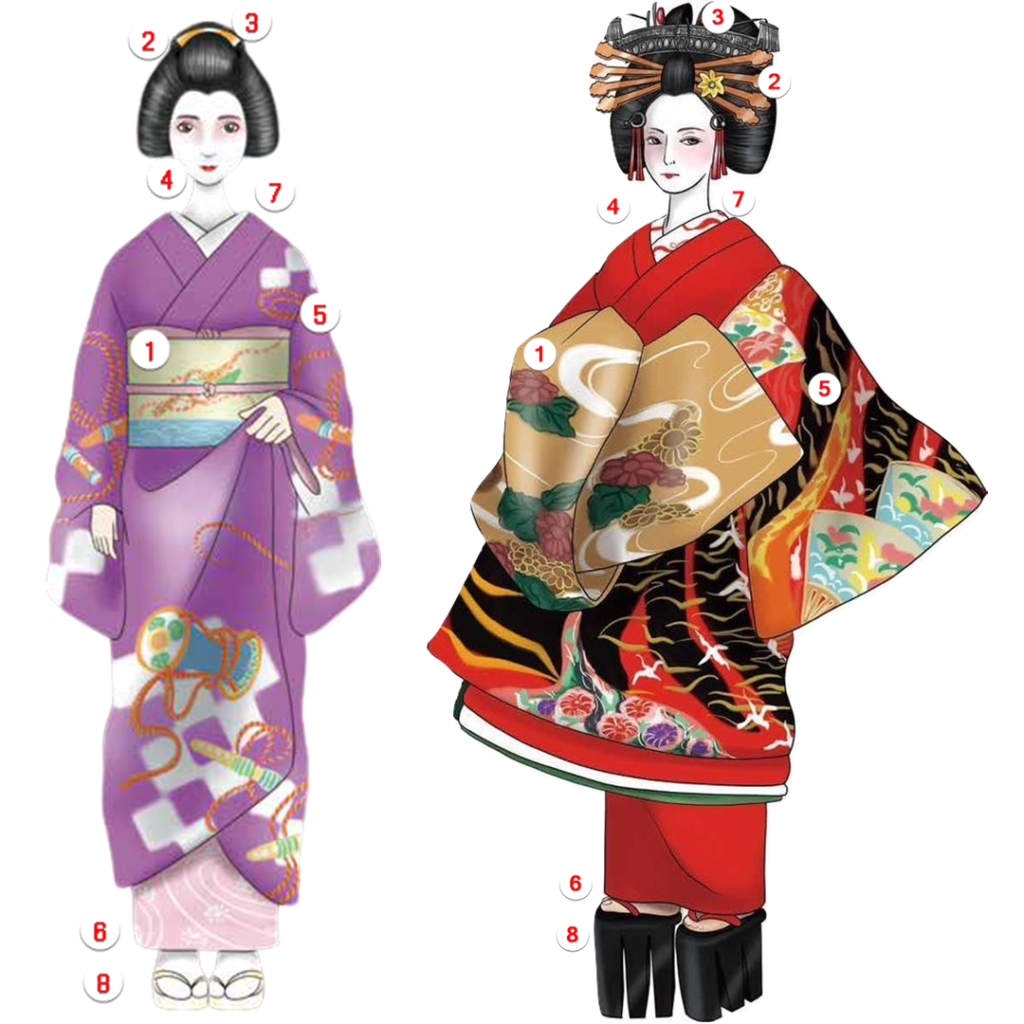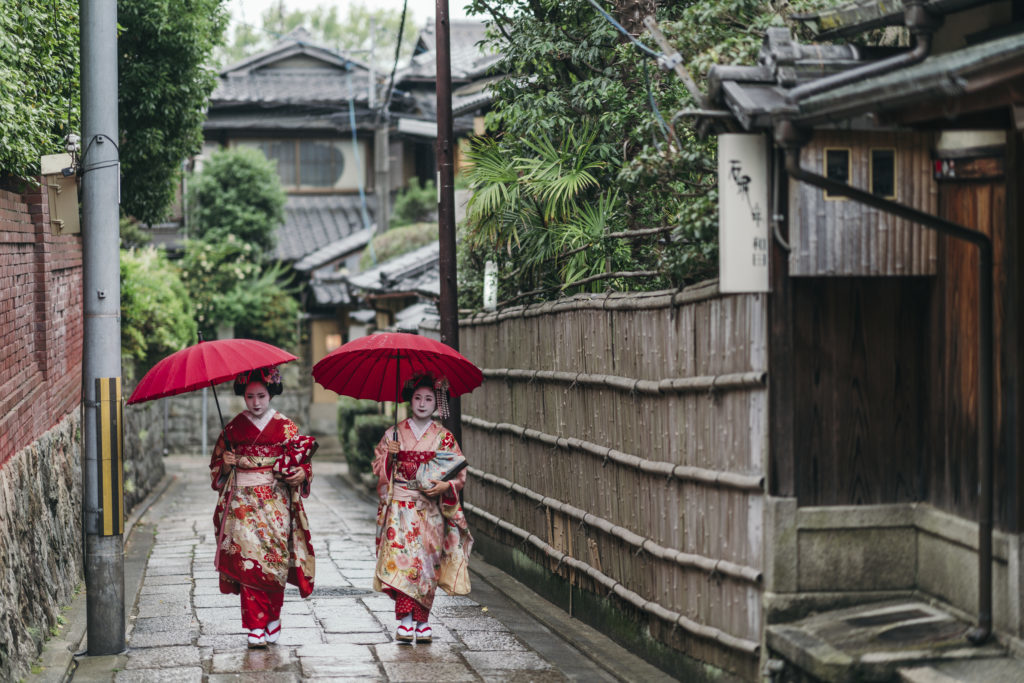Do Geisha Sleep with their Clients?
No, as prostitution is illegal in Japan and the geishas are cultural performers who are deeply respected. Geisha never sleep with their clients as it goes against the rules of the organizations they belong to. The connotation emerged in post-war Japan when some sex workers introduced themselves to foreign soldiers as geisha girls. Also, historically, the entertainment districts in Japan including kabuki theaters, geisha houses, and other forms of entertainment venues were located close to each other and governed by a similar set of rules which caused some early foreign visitors to think geishas are prostitutes. The prostitutes were called oiran and they looked different from geisha.
Why do people think the geisha are courtesans or prostitutes?
“Remember, Chiyo, geisha are not courtesans. And we are not wives. We sell our skills, not our bodies. We create another secret world, a place only of beauty. The very word “geisha” means artist and to be a geisha is to be judged as a moving work of art.” ― Arthur Golden (Memoirs of a Geisha)
Geisha are not courtesans. The image of geisha as prostitutes was popularized by American soldiers after World War II. The geisha has always been a symbol of beauty and elegance, so girls from lower social classes tended to introduce themselves to American soldiers as geisha. That’s how the myth spread all over the world.
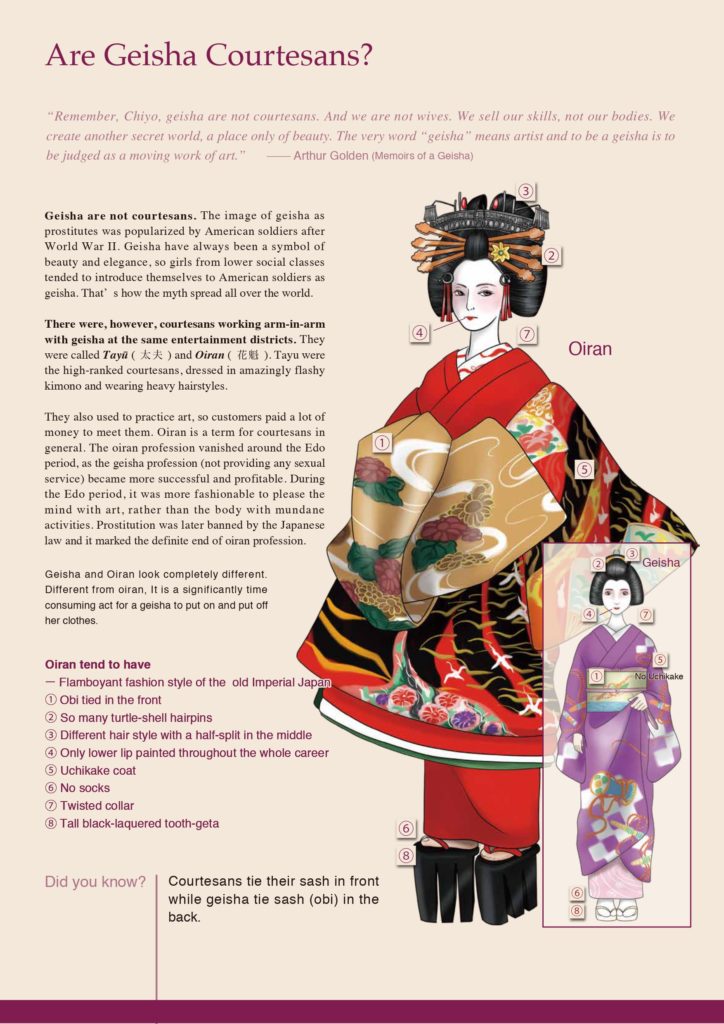
Oiran vs Geisha (Prostitute vs. Artist)
During the Edo Period, there were courtesans working arm-in-arm with geisha at the same entertainment districts. They were called Tayū ( 太夫 ) and Oiran ( 花魁 ). Tayu was the high-ranked courtesans, dressed in amazingly flashy kimonos and wearing heavy hairstyles.
They also used to practice art, so customers paid a lot of money to meet them. Oiran is a term for courtesans in general. The oiran profession vanished around the Edo period, as the geisha profession (not providing any sexual service) became more successful and profitable. During the Edo period, it was more fashionable to please the mind with art, rather than the body with mundane activities. Prostitution was later banned by Japanese law and it marked the definite end of the oiran profession.
Geisha and Oiran look completely different. Unlike the oiran, It is significantly time-consuming for a geisha to put on and take off her clothes.
To see differences between geisha and maiko please click here
Did you know?
Courtesans tie their sash in front while geisha tie sash (obi) in the back.
The history of the geisha and courtesans
By the time that the geisha profession became recognized by the government in the 17th century there already existed other professions who worked in the same hanamachi that they did. These include kabuki actors, rakugo performers, and various ranks of prostitutes. The most common type of prostitutes was known as Yūjo (遊女), which means “Woman to Play With,” who would line up on verandas each night to be chosen by customers.
In contrast, the highest-ranking of them, who were the true courtesans, were the Oiran (花魁) and the Tayū (太夫). Oiran, which means “First Flower,” were found throughout the country and were at the top of the hanamachi pecking order.
They wore extremely gaudy kimono in multiple layers as a testament to their status, with the most popular and wealthy five layers or more, each with the most splendid embroidery and decoration that money could buy. When they traveled from their place of residence to the place where they’d meet with their customers they’d hold glamorous parades known as Dochū (道中). The oiran would walk in tall sandals that were 30 centimeters/12 inches or higher in a fashion called the Figure Eight movement, in which she would swing one foot out and around in a figure-eight motion with each step. This meant that she did not walk very fast, but the point was to show off her wealth, which she also did with the presence of her entourage of retainers, maids, and apprentices.

Tayū, meaning “Great Person,” was the apex of the courtesans even above the oiran, and were so exclusive that they only existed in Kyoto. They were very similar to their oiran cousins but had a more extensive education so that they could act as consorts to the nobility. Tayū and oiran often shared the nickname of “Castle Destroyers” as their beauty could lead to rival lords fighting for their affections and even destroying their houses and reputations in the process.
When the geisha began to exist within the same space as these women and became extremely popular the yūjo lodged a complaint with the government stating that the geisha were taking their business. To satisfy both occupations the government passed laws stating exactly what a geisha and what a yūjo could and could not do. It strictly stated that geisha were not to be part of any prostitution whatsoever, lest they lose their license to entertain, whereas yūjo were only allowed to sell sex and not entertain.
To show that they did not and would not sell sex geisha began to tie the knot of their obi on their backs. Up until then all women, from nobles to everyday people to prostitutes, tied their obi knots in the front. Contrary to popular belief, this was not done so that they could undress easily, but rather a fashion style that had originated in the Heian Period (794-1185). The geisha’s look became so popular that it was soon adopted by the townsfolk and eventually became the standard which all obi knots are tied today.
Prostitution was made illegal in Japan in 1958, so the yūjo and oiran no longer exist. A small group of tayū still remain in Kyoto to this day, but their function is now akin to that of a geisha in which they entertain at exclusive parties with song and dance.
Geishas are artists who are dedicated to their craft
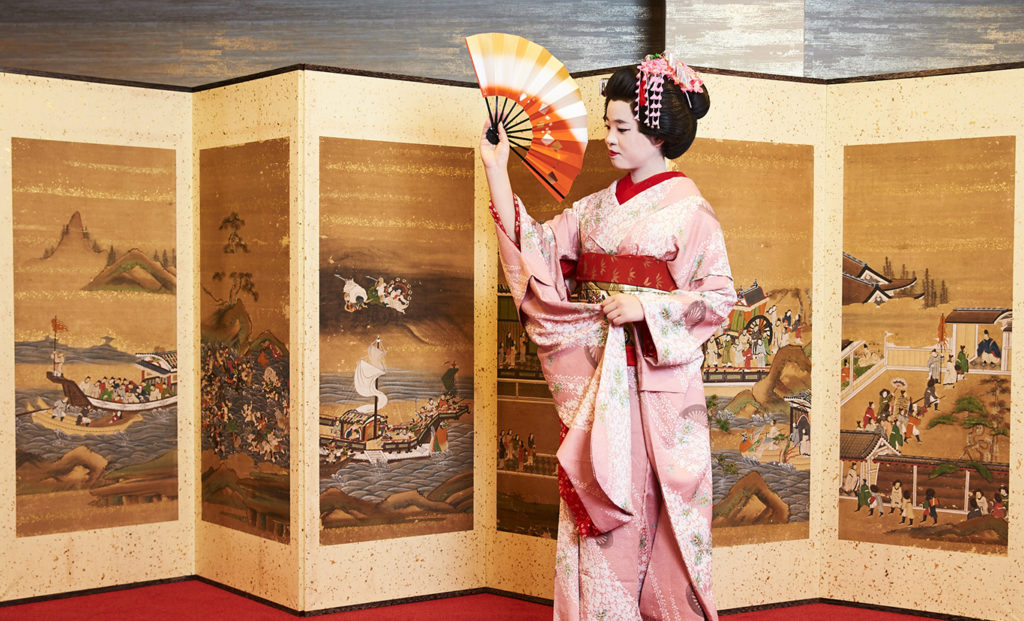
Geishas continue to pride themselves on the fact that they have not and do not sell themselves for sex. They remain artists who are dedicated to their craft and are not to be confused with the prostitutes that no longer exist.
Geisha (芸者) means “Person of Art” or “Artist.” While these terms are quite vague, they have come to be identified with highly trained women who entertain exclusive clientele in special districts. Each geisha is registered to work in a Hanamachi (花街), which means “Flower Town,” and will live and train in these districts while they remain active in the profession.
Geisha will take classes in various art forms six days a week and get two days off from work each month.
Geisha is an artist who entertains with dance, music, conversation, and other arts at banquets held at teahouses. Nowadays geisha also promote the traditional Japanese culture. In Kyoto, geisha are called GEIKO ( literally translates to “art child” ) and the younger trainees are called MAIKO ( “dance child” ).
Geiko is above 20 years old, while maiko is a teenager between 15 and 21 years old. Differences between maiko (junior geisha) and senior geisha
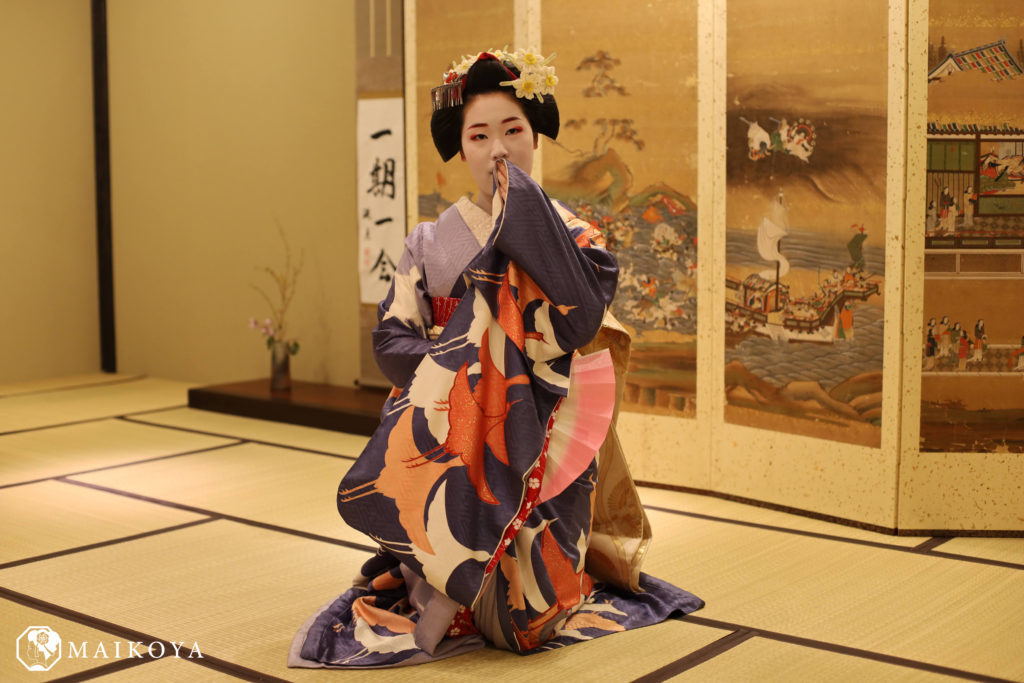
The basic geisha training includes dance, shamisen, Tea ceremony, drum instrument. Some of the artists practice additional subjects, such as singing, calligraphy, flower arrangement, or koto.
Profession Geisha
The geisha profession came about during the early Edo Period (1603-1868) when the shogun-ruled government began to allow individuals to go on pilgrimages to the great shrines around the country. Kyoto was the capital of the country at the time and was a popular destination for its many large shrines and gorgeous landscapes. The first district, Kamishichiken (上七軒), was established from the extra wood leftover from rebuilding the Kitano Tenmangu (北野天満宮) shrine. The shogun at the time, Toyotomi Hideyoshi (豊臣秀吉), held a great party in the area and gave his consent for the district to operate under the government’s orders. He loved the dango (sweet rice on skewers) so much that he allowed Kamishichiken the use of it as their personal symbol.
One of the most popular shrines in Kyoto is the Yasaka Shrine (八坂神社) located on Shijo Dori. To take advantage of the new influx of tourists small snack houses sprung up around the shrine. Eventually, they became the tea houses that we know today and were packed with tourists and locals all day long. The districts of Gion Kobu (祇園甲部), Gion Higashi (祇園東), Miyagawa Cho (宮川町), and Pontocho (先斗町) were established from these tea houses.
The first geisha to appear were men who entertained groups of people enjoying parties at these establishments by telling lewd jokes and singing popular songs. However, the female serving girls of these establishments began singing and dancing for these customers too and eventually displaced the male geisha as they were far more popular with the mostly male clients. These women then became recognized by the government as an official profession and thus the geisha we know today was born. Their profession has largely stayed the same for the past 300 years and is continuing to stay strong amidst global change.
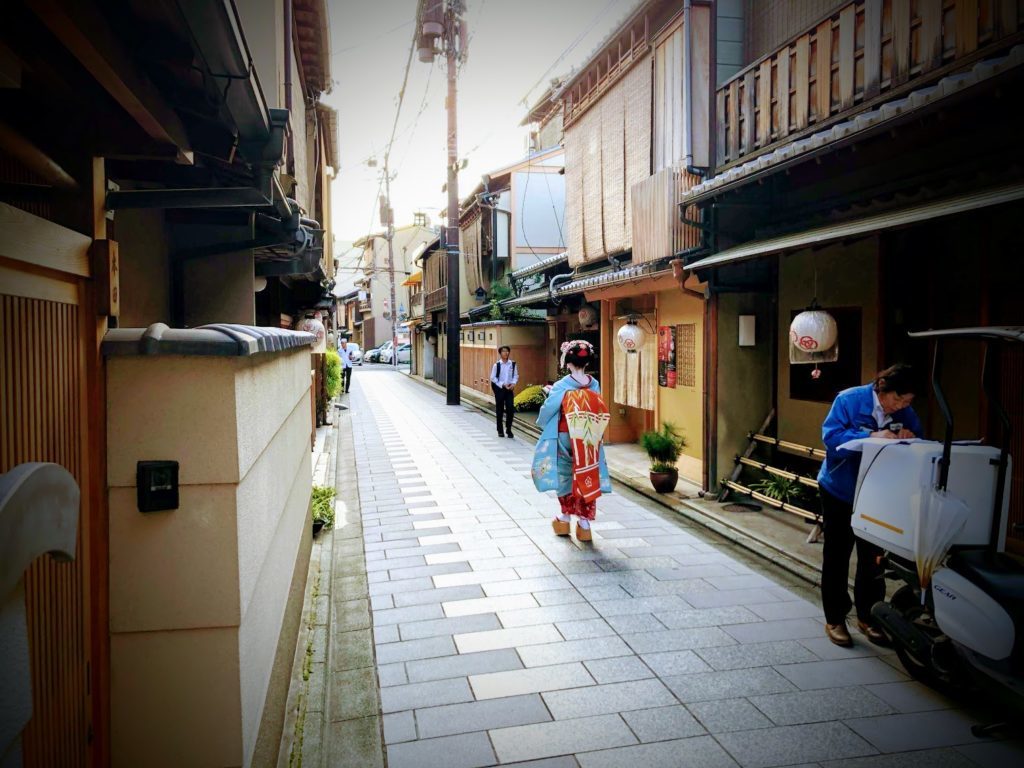
Geisha walking in Miyagawacho
How did it start?
Historically Kyoto was the capital of Japan and a popular destination for pilgrims. The first geisha were men performing dance and songs for the pilgrims who emerged in the 17th century.
They were replaced quickly with female staff members of the tea houses that were located on the way to major temples. And until today, for over 300 years now, the geisha profession is still limited only to Japanese women.
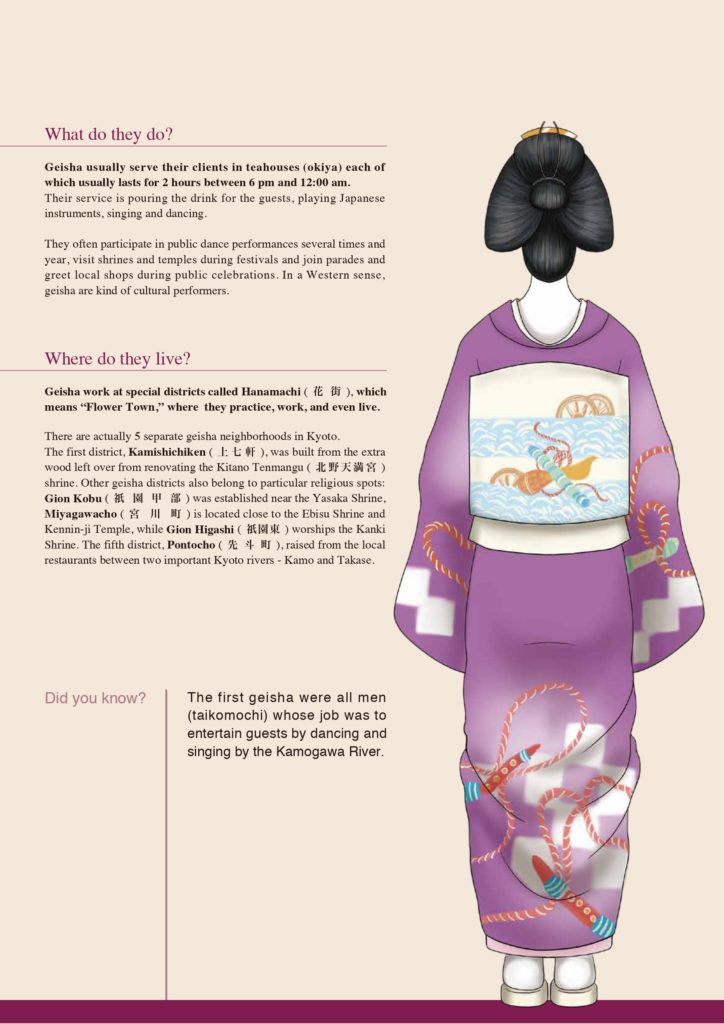
What do they do?
Geisha usually serve their clients in teahouses (okiya) each of which usually lasts for 2 hours between 6 pm and 12:00 am.
Their service is pouring the drink for the guests, playing Japanese instruments, singing, and dancing.
They often participate in public dance performances several times and year, visit shrines and temples during festivals and join parades and greet local shops during public celebrations. In a Western sense, geisha are kind of cultural performers.
Where do they live?
Geisha work at special districts called Hanamachi ( 花 街 ), which means “Flower Town,” where they practice, work, and even live.
There are actually 5 separate geisha neighborhoods in Kyoto. The first district, Kamishichiken ( 上 七 軒 ), was built from the extra wood left over from renovating the Kitano Tenmangu ( 北 野 天 満 宮 ) shrine.
Other geisha districts also belong to particular religious spots: Gion Kobu ( 祇 園 甲 部 ) was established near the Yasaka Shrine, Miyagawacho ( 宮 川 町 ) is located close to the Ebisu Shrine and Kennin-ji Temple, while Gion Higashi ( 祇園東 ) worships the Kanki Shrine. The fifth district, Pontocho ( 先 斗 町 ), raised from the local restaurants between two important Kyoto rivers – Kamo and Takase.
Did you know?
The first geisha were all men (taikomochi) whose job was to entertain guests by dancing and singing by the Kamogawa River.
Oiran Fast Facts
- “Oiran” was taken from the Japanese phrase “oira no tokoro nesan” which loosely means “the older sisters of our place.
- Unlike common prostitutes, the oiran plays an active role in choosing a customer; customers would have to meet with the oiran three times and initially go through tests to be approved by the oiran’s tea house and the oiran.
- If a customer has been chosen by an oiran, they are forbidden to visit others. If they do, this is seen as an insult.
- Customers and oiran do not make direct contact. An in-between or chaperone called a “yarite” (遣手) would establish the connection. Customers would also get into contact with tea houses or “chaya” to be introduced to an oiran.
- The oiran holds a higher social rank than her customers when in the “yukaku” or “playground” where the oiran and clients meet.
- Similar to the geisha, becoming an oiran can be expensive. The training and education in the traditional Japanese arts are what sets the oiran apart from a regular prostitute. Oiran would also have to pay upkeep to maintain their looks.
- The oiran were high-ranking sex workers so their clients would normally be the nobility and the rich and powerful. Meeting with an oiran is not for the regular peasant.
- The oiran had helpers called “kamuro” who were girls around the age of 10. The kamuro would do everyday chores for the oiran, and would in turn, receive training and education.
- Oirans would usually start as kamuro then become a shinzou as they get older, but not all shinzou can become an oiran.
- Oirans have their own accents “kuruwa kotoba” (廓詞) that hides their original accent.
- The oiran’s unique hairstyle is called the “datehyougo” (伊達兵庫). It uses accessories made of coral and tortoise shells.
- The black lacquered geta are also called sanmaiba geta (三枚歯下駄).
- The oiran were not allowed to leave the pleasure districts.
- The geisha was considered as lower-class entertainment before the oiran profession declined.
- Oiran prestige was based on their beauty, character, education, artistic talents, and overall reputation.
- The oiran did not use their real identities but rather used names that reference poetry, nature, and literature. These names can be inherited by another oiran by being promoted. Reputable names are rarely passed and would usually hold as much prestige as the previous user.
- Oirans have 6 different rankings (Tayu, Koshi, Yobidashi Tsukemawarashi, Sancha, Tsukemawarashi, Zashikimochi). The tayu was the highest and it was extremely hard to become one.
BACK TO Geisha Experience Reservation Page
Contact us : info@mai-ko.com


